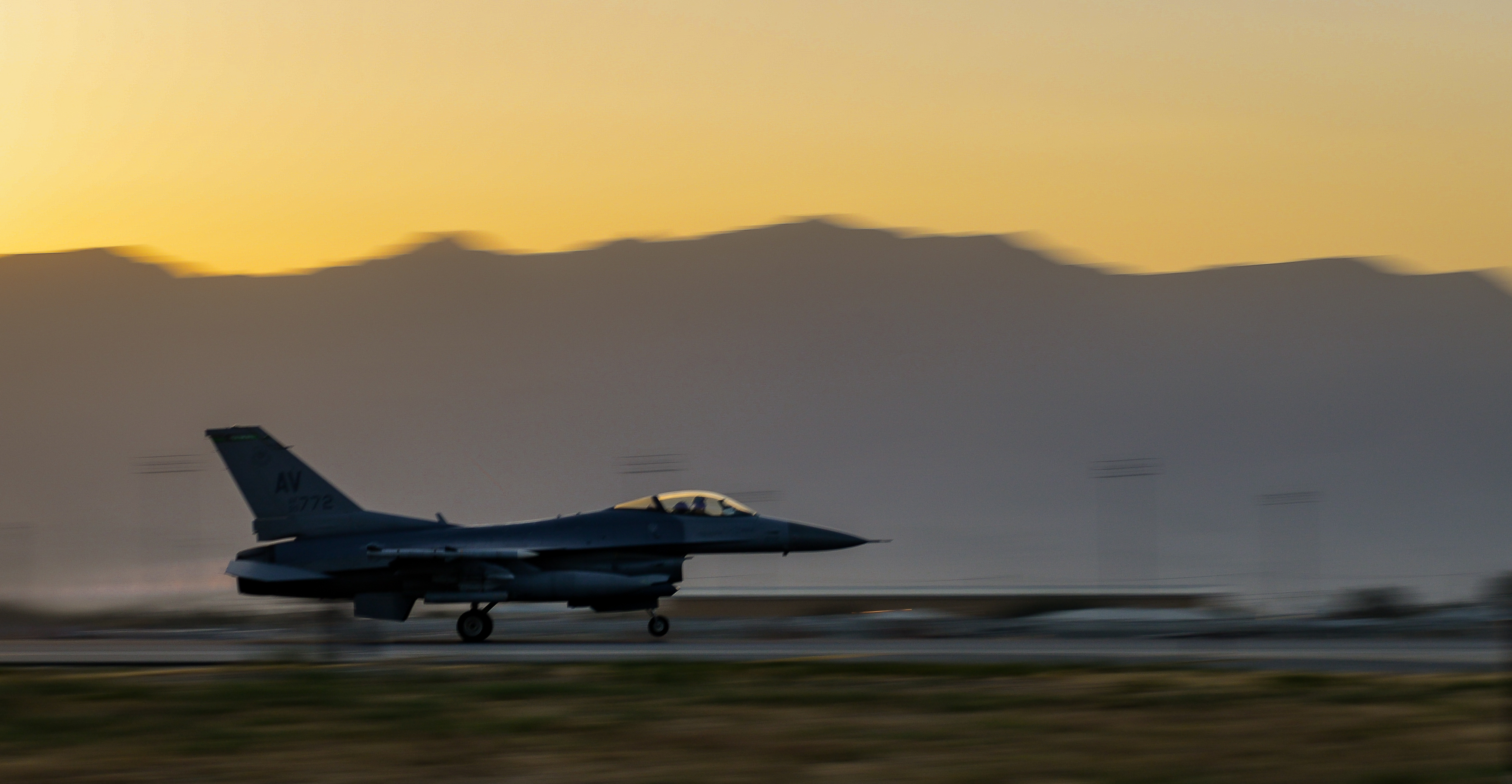
An F-16 Fighting Falcon with the 555th Expeditionary Fighter Squadron takes off from Bagram Airfield, Afghanistan, Aug. 22, 2017. Air Force photo.
The US-led coalition is not close to winning the war in Afghanistan, but the Trump administration’s new strategy there is making a difference already, top Defense Department leaders told Congress Monday.
“We’re not at a point where we can bring a successful political solution to the war,” Chairman of the Joint Chiefs of Staff Gen. Joseph Dunford told the Senate Armed Services Committee. And while Dunford warned it was far too early to judge the outcome of the change, Secretary of Defense Jim Mattis told the Committee “there appears to be a psychological impact already.”
Dunford said commanders on the ground have already developed “a new operational approach to break the stalemate and bolster Afghan capabilities” in alignment with President Donald Trump’s broader strategy. That approach, Mattis said, is to “regionalize,” “realign,” “reinforce,” and “reconcile.”
Mattis said the US military effort recognizes “challenges exist beyond Afghanistan” within the region, bearing on the war there, and the Department of Defense is looking to “expand our collaboration,” especially with India. Mattis said India is already helping to train Afghan forces and battlefield medics in Indian military schools. He called closer ties with India “a generational opportunity between the world’s two largest democracies to work together.”
The US has also realigned its advisory role to push its personnel closer to the ground with Afghan units. “Fighting will continue to be carried out by our Afghan partners,” Mattis confirmed, but US advisors are now locating themselves “at the battalion and brigade level.” This change is crucial, Mattis said, because “those units with NATO and American advisors win, and those without them often do not win.” As a result, “we’re going to spread [out] the number of units with advisors.”
The DOD is also working to reinforce the effort in Afghanistan. The US has already committed to an “addition of over 3,000 US troops,” but commitments are also being gathered from NATO allies to contribute additional troops and funds, Mattis said. “I believe we will see from at least 15 nations additional troops put in there,” Mattis said.
NATO authorities are also changing, allowing coalition assets to increase close air support for Afghan partners on the ground. “NATO airstrikes overhead deny the enemy ever having the high ground in terms of the dominating terrain,” Mattis said. “That’s a tactical effect that will make the Afghan army bolder and it will give them more opportunities, militarily, to take the fight to the enemy.”
Other efforts will focus on building Afghan capabilities. Dunford said he supports Afghan President Ashraf Ghani’s efforts “to expand special operations units while at the same time reducing less effective units,” and he said the US will also “continue to develop a capable, sustainable Afghan air force.”
Dunford said he expects DOD “will have completely transformed the Afghan air force” within six to seven years. Key to that change, he said, is “the transition from Mi-17 helicopters to UH-60 helicopters, which includes an attack variant.” This move will build on the success of the past two years, Dunford said, when the US successfully fielded the A-29 light attack aircraft and the MD-530 attack helicopter in the Afghan air force.
As a result of US efforts, Mattis said, “for the first time in 16 years, all six Afghan corps are active.”
Changes in the rules of engagement for US forces have also brought positive change, Mattis said. He offered the example of “releasing our military from … a proximity requirement,” one that “did not allow us to employ the airpower fully” except when US troops had been directly fired upon. As a result of the change, Mattis said, “we have had more airstrikes than any year since 2012.
Mattis said one sign Afghans are optimistic about the new strategy is “property values in Kabul … have started going up since we announced this strategy.” Still, Dunford said it is way too early to judge. “We’ll have a pretty good sense of the strategy next summer” during fighting season, he told the committee. Another crucial test will come as Afghanistan goes to the polls next year. “The Afghans’ ability to perform the security function associated with the elections” will provide another key indicator of progress, Dunford said.
Ultimately, both men agreed, a political reconciliation including the Taliban will be necessary to end the war. “Our goal is a stabilized Afghanistan, achieved through an Afghan-led, Afghan-owned peace process,” Mattis said. The administration’s wager is that “a conditions-based strategy, not time-based or troop-number focused,” is the way to get there, Mattis said.
The most crucial condition, in the end, may be the Afghans.
“It’s going to require the Afghan people to actually develop the peace process that will bring an end to the war,” Dunford said. The US military hopes their new approach can finally create the environment for that elusive event to happen.